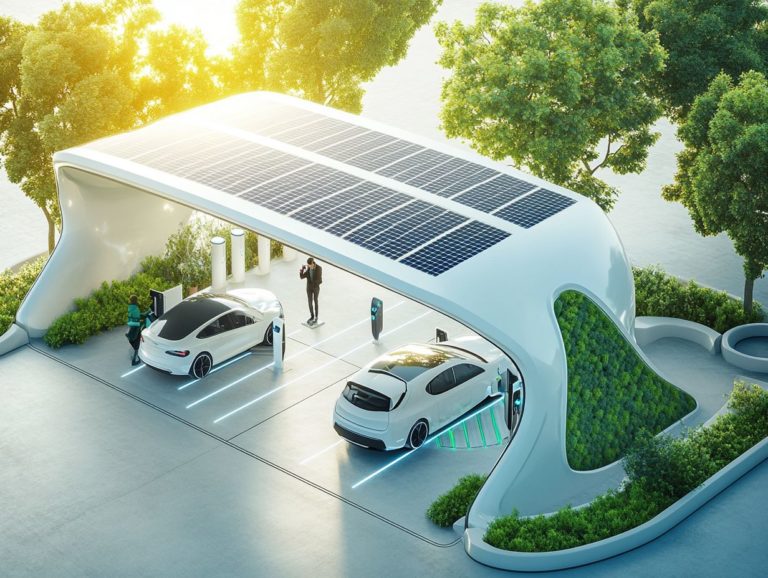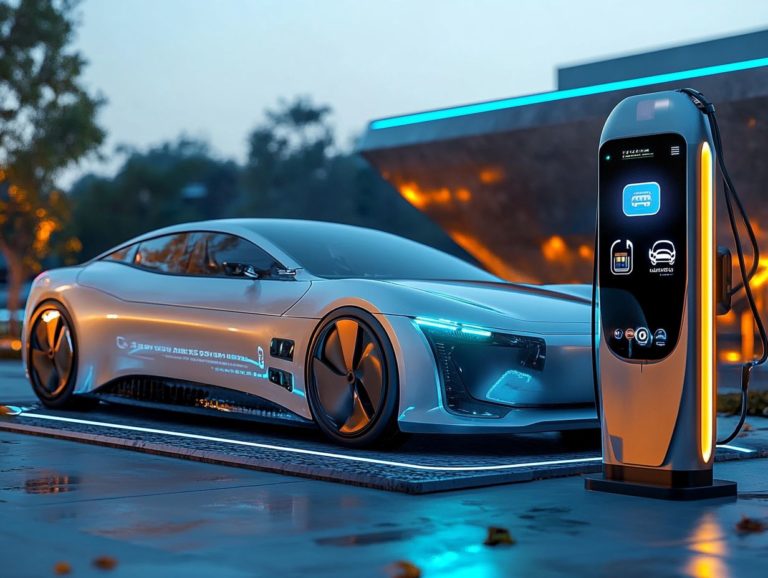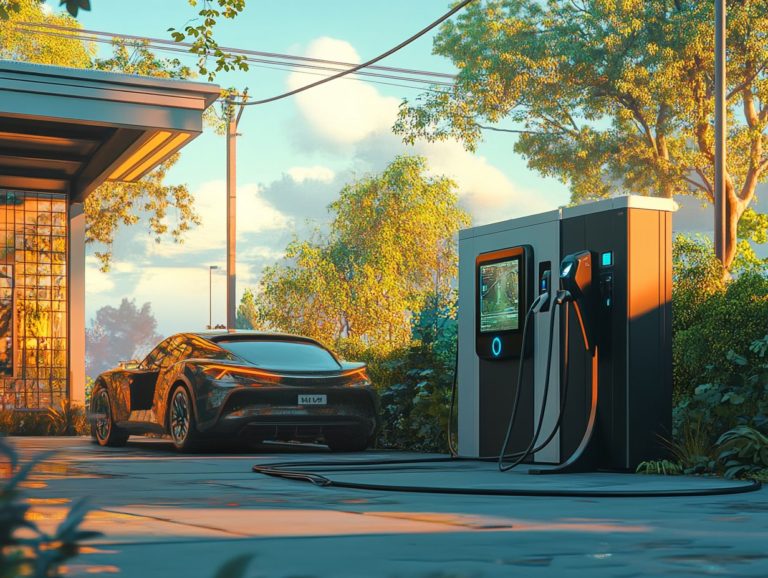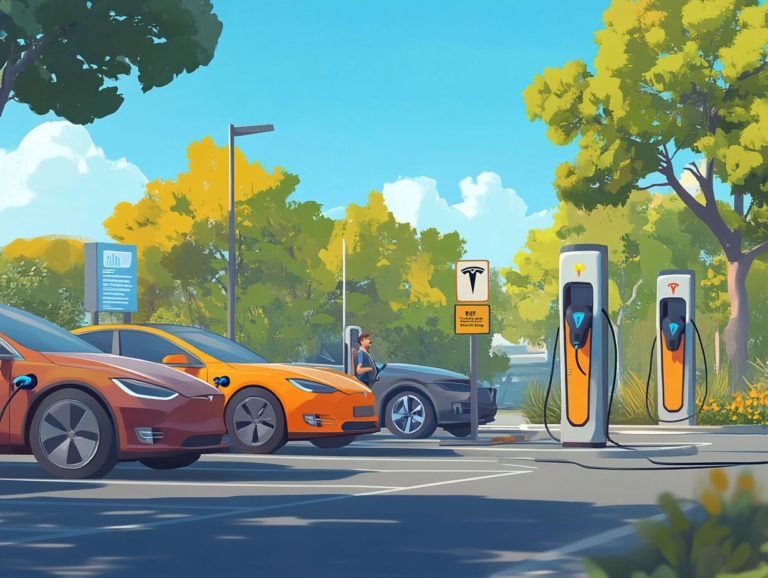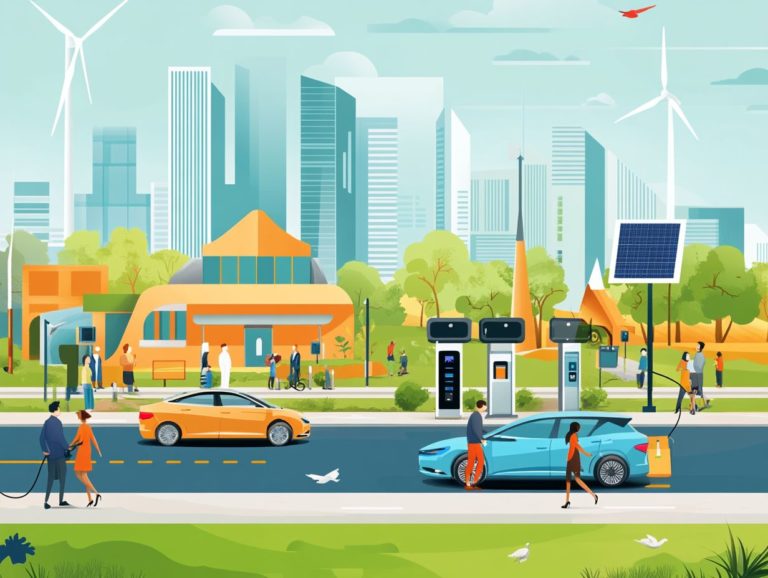Understanding Charging Speed: AC vs. DC
Charging speed is how quickly your electric vehicle (EV) can recharge its battery. It plays a crucial role in enhancing your electric mobility experience.
The time required to charge your EV can significantly influence its usability, particularly during long journeys or in urban areas where charging stations might be scarce.
By grasping the nuances of charging speed, you can select the most suitable charging solutions that meet your diverse needs while ensuring optimal battery health and performance.
The efficiency of charging not only dictates how swiftly you can hit the road again but also significantly impacts the lifespan of your battery. Speedy charging options can generate extra heat, which, if not properly managed, can stress your battery. Methods like DC fast charging can be incredibly advantageous during quick pit stops but may lead to faster battery wear if overused.
For anyone serious about embracing electric mobility, finding the right balance between speed and battery health is crucial. This ensures that your vehicle remains reliable and efficient, no matter the situation.
Contents
AC Charging vs. DC Charging
AC charging and DC charging are two essential methods for charging electric vehicles, each boasting unique characteristics and applications.
AC charging usually works with the same voltage as home outlets, making it an ideal option for home installations.
On the other hand, DC charging excels with its rapid power conversion capabilities, delivered through dedicated charging stations, which is vital for electric fleets and those embarking on long-distance journeys.
Key Differences: AC vs. DC Charging
The key differences between AC and DC charging revolve around their power output and charging rates, which directly impact the efficiency and charging patterns of electric vehicles. AC charging usually operates at lower voltages and is managed by a device within the vehicle that controls charging, while DC charging employs high-voltage connections to deliver energy rapidly to the vehicle’s battery.
This distinction is vital for your understanding: AC chargers typically supply power between 3.7 kW and 22 kW, making them well-suited for home and slower charging applications. In contrast, DC fast chargers can unleash power outputs ranging from 50 kW to an impressive 350 kW, slashing charging times to as little as 15 to 30 minutes for a meaningful charge.
The efficiency of AC charging is constrained by the limitations of the onboard charger’s capacity, impacting how quickly your battery can be replenished. On the other hand, DC charging boasts a streamlined design that allows for more direct energy transfer, effectively optimizing battery utilization and minimizing energy loss during the process.
DC charging stations can be costly and require robust infrastructure, highlighting the necessity for a balanced approach to facilitate the widespread adoption of electric vehicles in the future.
Key Takeaways:
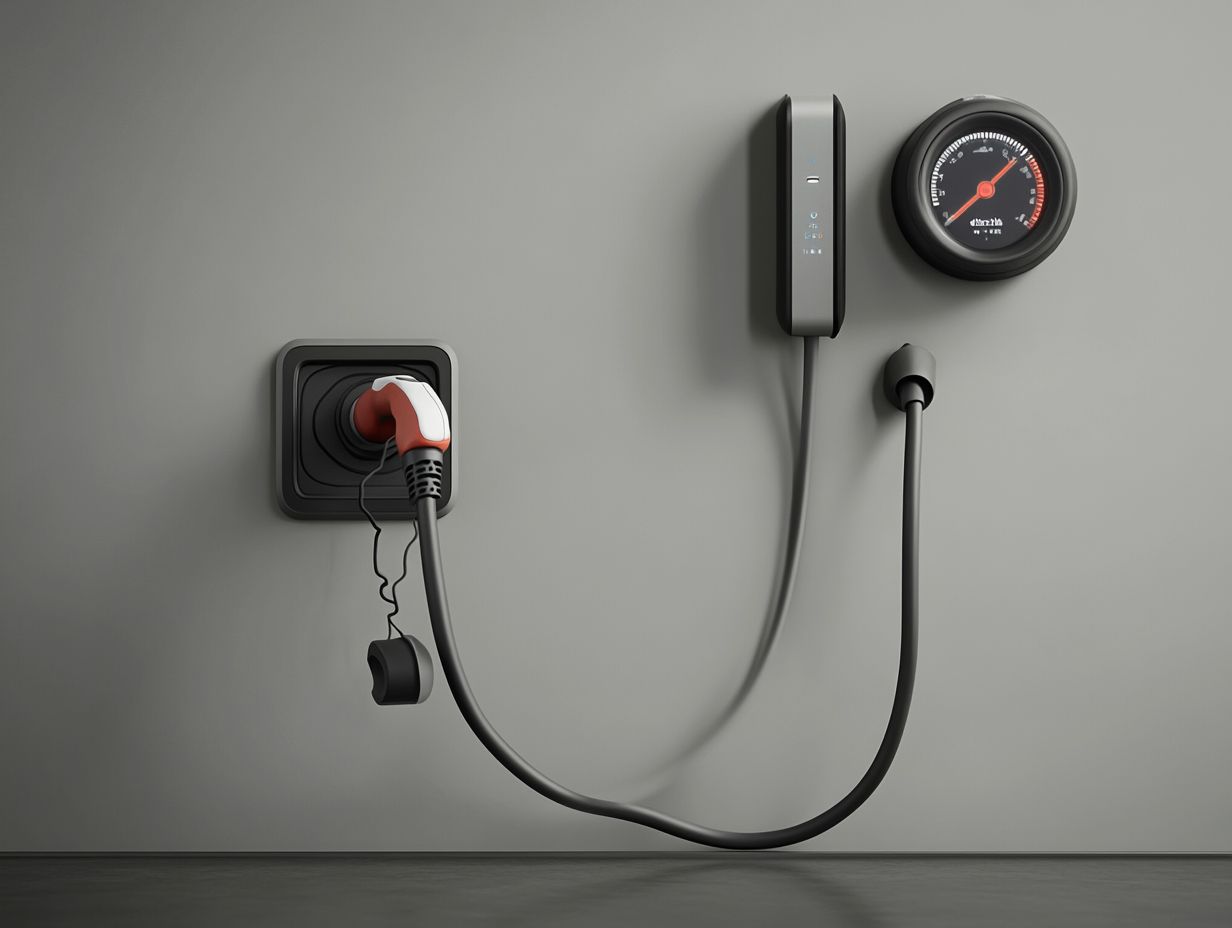
- Charging speed is crucial when choosing a charging method.
- AC charging is slower but widely available, while DC charging is faster but pricier.
- Charging speed can be affected by multiple factors; optimizing them can enhance efficiency.
Understanding Charging Speed: Why It s Important
By the end, you ll confidently choose the charging methods that suit you best!
Benefits and Drawbacks of AC Charging
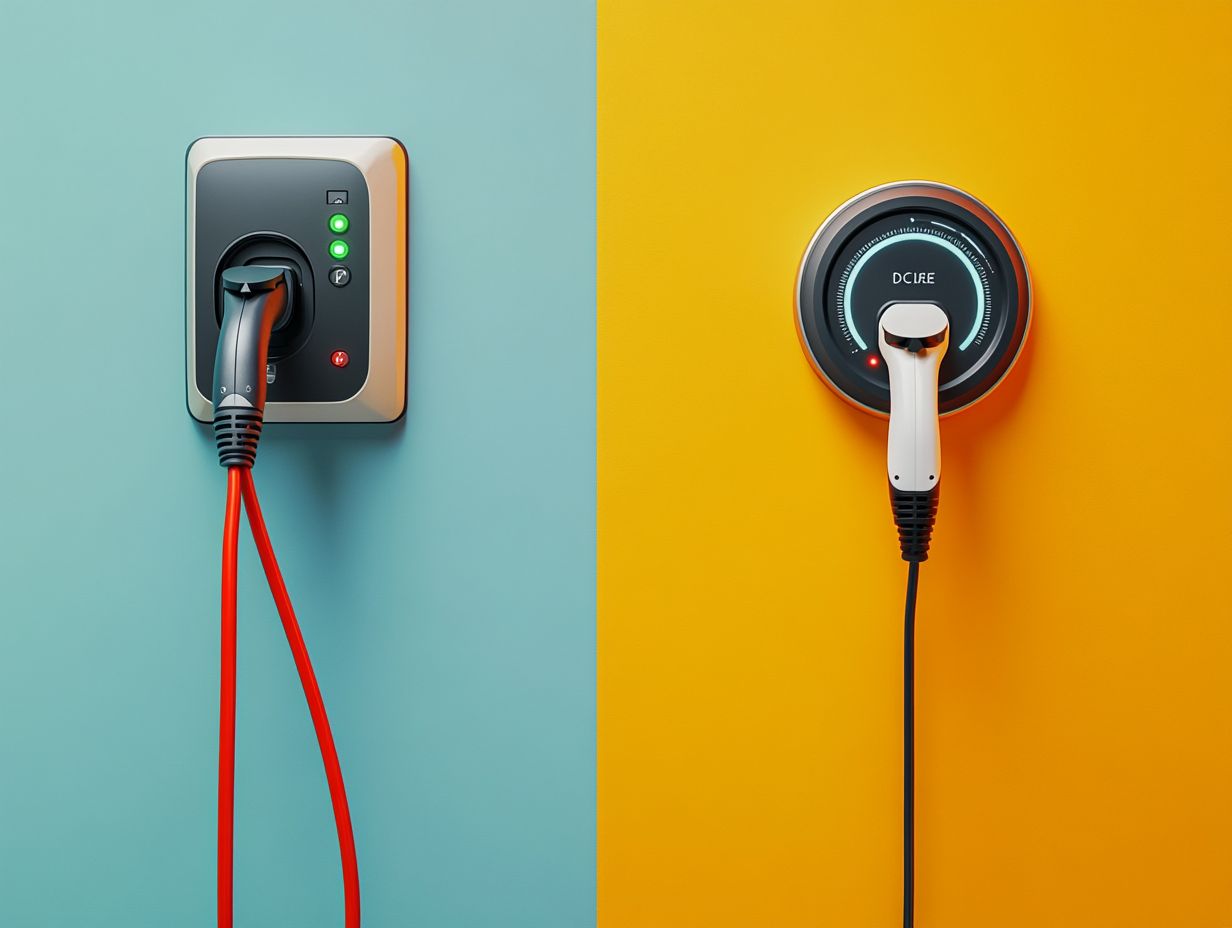
When considering AC charging for your electric vehicle, it s crucial to weigh both its benefits and drawbacks.
One standout advantage is its affordability and ease of installation at home. This makes it a highly practical option for your daily charging needs. But watch out! This convenience comes with longer charging times compared to DC charging methods.
Pros and Cons of Using AC Chargers
Using AC chargers presents a unique mix of advantages and disadvantages, especially regarding charging time and the availability of charging infrastructure. While the ease of home installation and lower costs can enhance your charging experience, you might face longer wait times for a full charge compared to DC alternatives.
This delay can be particularly frustrating if you value quick turnaround times for your electric vehicle. Although AC chargers are generally more affordable to install and maintain, their slower power delivery can limit your flexibility during long trips where charging stations may be few and far between.
The widespread availability of AC chargers makes it easier for everyone to switch to electric vehicles now! Striking a balance between these factors is essential for enhancing your satisfaction and optimizing the overall charging network.
Benefits and Drawbacks of DC Charging
DC charging presents a range of compelling benefits and drawbacks that are crucial for you as an electric vehicle user, especially regarding fast charging capabilities. The high power output enables substantially reduced charging times at public stations, making it an appealing choice for long journeys and electric fleets alike.
Pros and Cons of Using DC Chargers
Using DC chargers presents distinct advantages and disadvantages that profoundly influence your charging efficiency and overall experience as an electric vehicle owner.
On one hand, DC chargers can deliver higher electrical currents, allowing for significantly quicker charging times. On the other hand, they often come with steeper charging costs and require specialized infrastructure.
You can charge your vehicle much faster with DC chargers compared to traditional methods! However, the initial installation costs for DC charging stations can deter some businesses and municipalities from adopting them, resulting in gaps in accessibility.
Not every location has the grid support needed for DC chargers, raising concerns about infrastructure readiness that can limit the convenience these powerful chargers offer.
While the benefits are undeniably appealing for those who prioritize quick charging, it’s essential to address the associated challenges to encourage broader acceptance and integration.
Factors Affecting Charging Speed
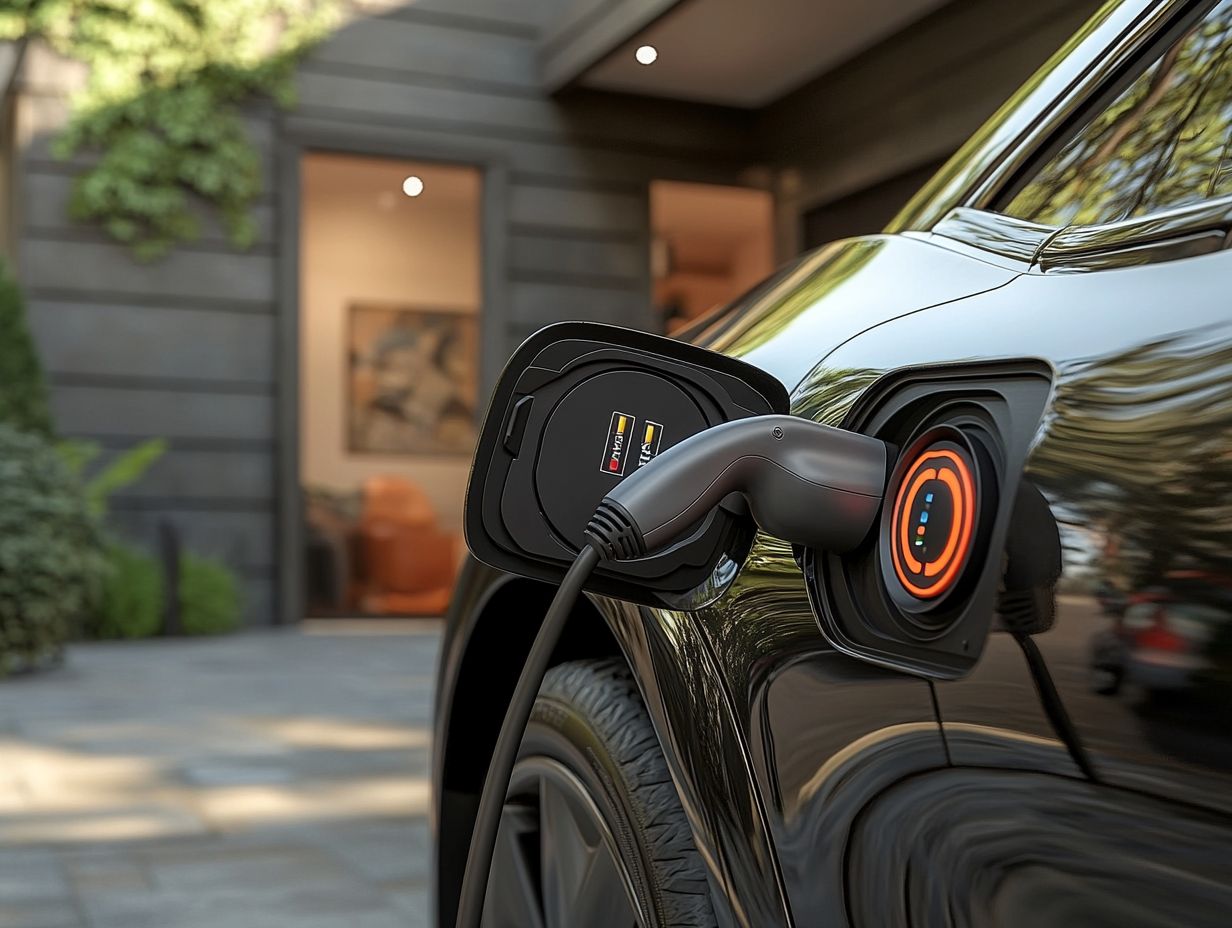
Several factors influence charging speed for electric vehicles, significantly impacting battery health and overall performance.
Elements such as charging methods, how charging speed changes over time, and battery capacities are crucial in determining how quickly your vehicle can recharge.
Explore your charging options today to find the best solution for your electric vehicle!
How to Optimize Charging Speed
To optimize charging speed for your electric vehicle, select the right charging solutions and technologies that cater specifically to your needs. Utilizing DC fast chargers during long trips can significantly cut down on charging time.
Efficient AC charging at home helps maintain battery health. When considering the ideal charger, factor in your vehicle’s compatibility and the accessibility of charging stations. Choose chargers that support the latest technologies, like Level 2 AC chargers or CCS, for quicker energy replenishment.
Faster charging offers convenience. However, it’s important to balance speed with long-term battery health. Over-reliance on high-speed charging can shorten battery life. Adopting a mix of charging habits, such as regular overnight AC charging, can enhance battery performance.
Ultimately, making informed choices about charger types enables you to maximize efficiency and durability.
Choosing the Right Charging Method
Selecting the ideal charging method for your electric vehicle is essential for fulfilling your unique charging requirements and enhancing your overall electric mobility journey.
Considerations such as your daily driving habits, the accessibility of public charging stations, and your preferences for home installation significantly influence the best charging solution for you.
Factors to Consider and Making the Best Choice
When choosing the best charging method, weigh factors like charging capacities, costs, and the overall impact on your vehicle s battery health. Evaluating these elements allows you to select the most effective charging solutions tailored to your needs and budget.
Additionally, assess the type of vehicle you own and its specific charging requirements. Fast charging options can cut down on downtime but often come with higher costs and could compromise long-term battery performance.
Conversely, slower charging methods might be more budget-friendly and gentler on your battery, ultimately extending its lifespan.
Understanding local power rates and the availability of charging stations is crucial for your decision-making. This ensures the method you choose aligns with both your financial constraints and convenience.
Frequently Asked Questions
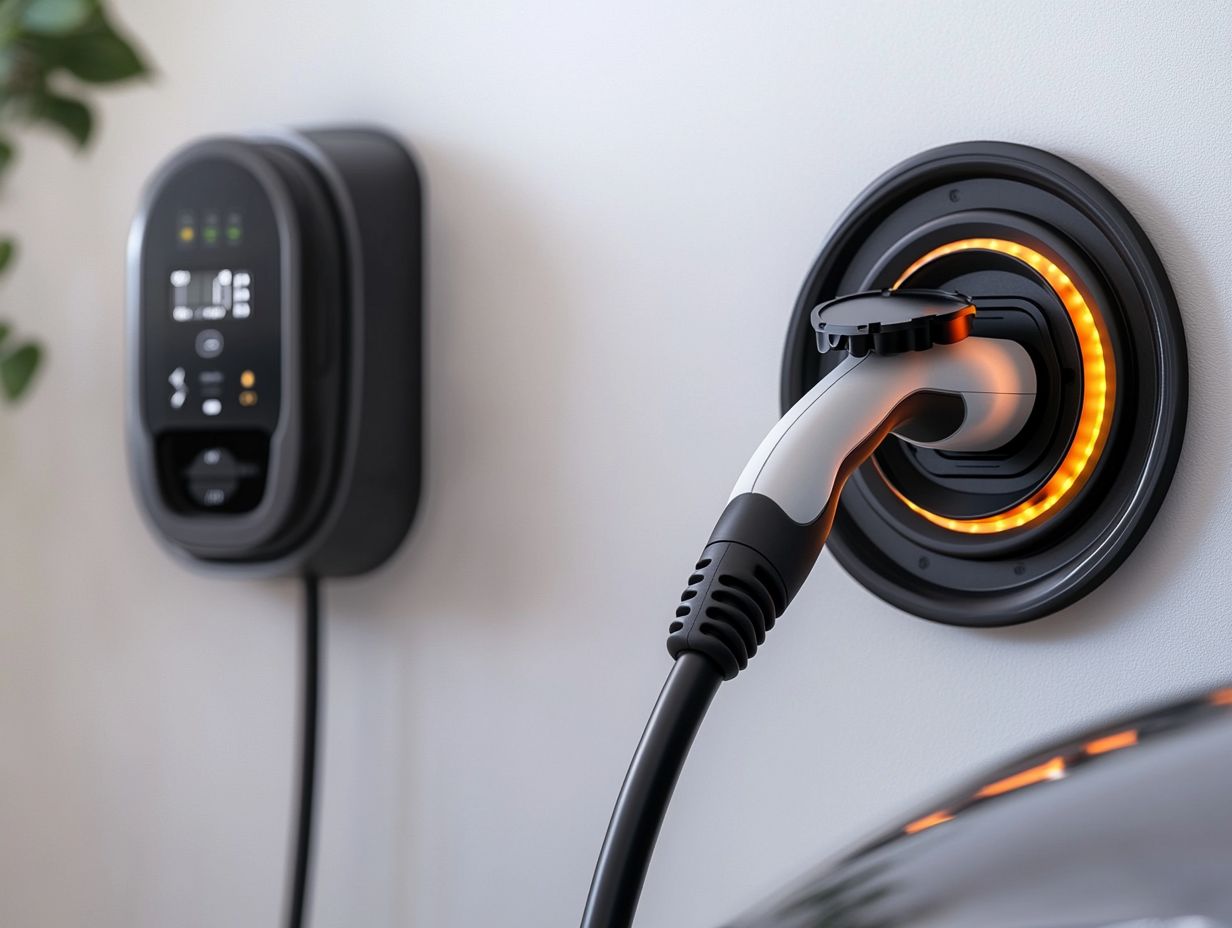
What is the difference between AC and DC charging?
AC charging uses alternating current, which is the type of electricity we typically use in our homes. DC charging uses direct current, which is a more powerful and consistent form of electricity.
Which one is faster: AC or DC charging?
DC charging is significantly faster than AC charging, as it can supply a higher amount of electricity to your vehicle in a shorter amount of time.
Why is DC charging faster than AC charging?
DC charging bypasses the need for your car’s onboard charger, used in AC charging to convert electricity from AC to DC. This drastically reduces charging time.
Can I use both AC and DC charging for my electric car?
Yes, most electric cars can use both AC and DC charging methods. However, not all charging stations offer both options.
Is there a difference in cost between AC and DC charging?
Usually, DC charging is more expensive than AC charging. This is due to the higher installation and maintenance costs of DC charging stations, as well as higher electricity prices.
Are there any safety concerns with using DC charging?
DC charging can be more dangerous than AC charging because of the higher voltage and amperage used. Always follow safety precautions and use certified DC charging stations.

